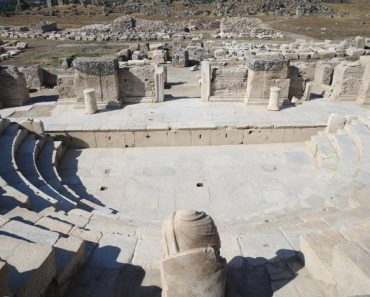Greece (officially the Hellenic Republic) is a country located in Southeastern Europe. Greece is an architectural treasure trove that offers a timeless journey through its rich culture and historical architecture, from the ancient ruins of the Acropolis of Athens, including the Parthenon, to the modern Acropolis Museum, which showcases a historic and artistic architectural influence spanning generations.
Greek Architecture
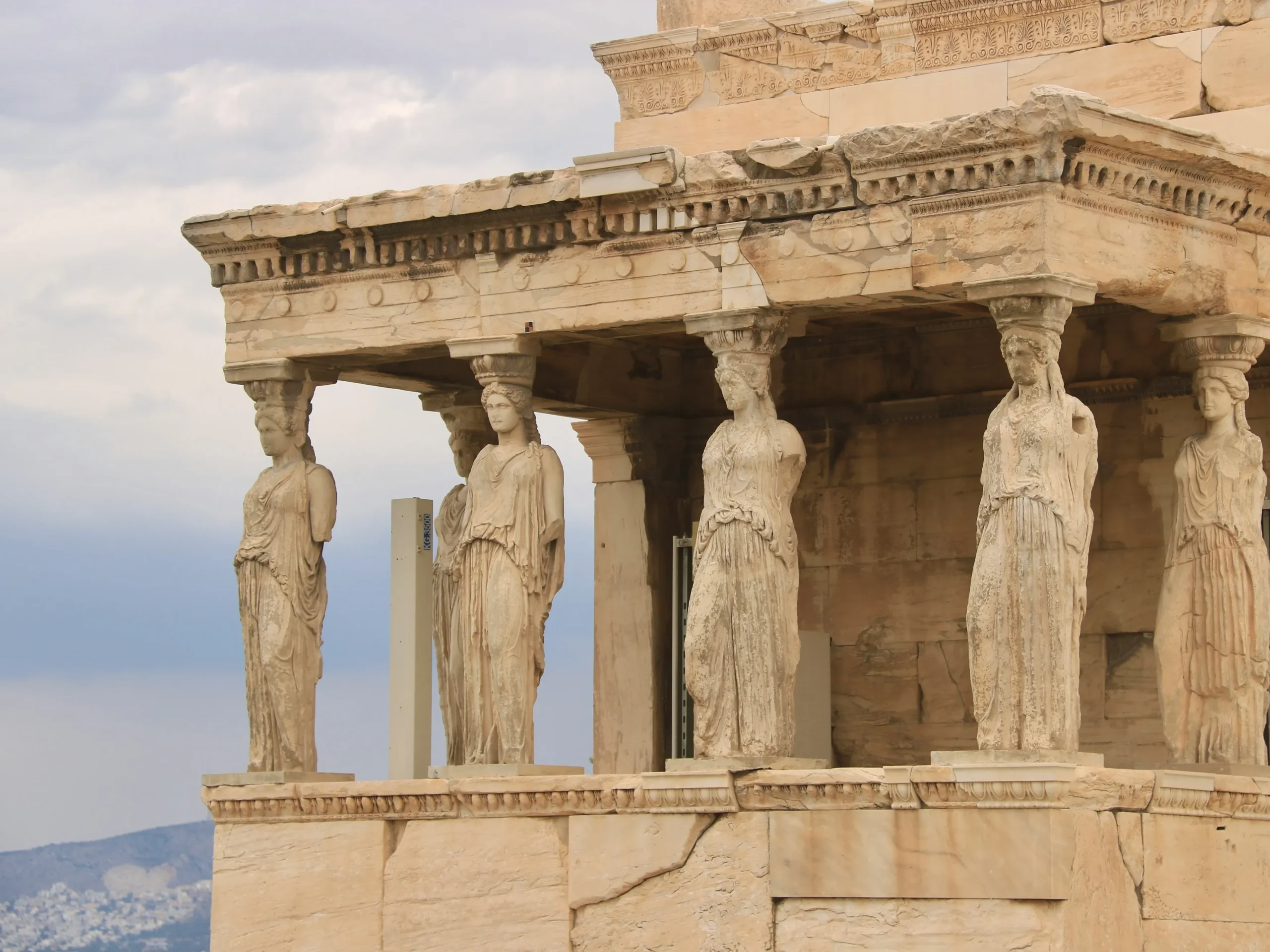
Greek Architecture flourished around the time of 900 BC and the 1st century AD, originating in the Greek mainland, the islands in the Aegean Sea, and the colonies on Asia Minor and Italy. It became a popular architectural style during the Renaissance period and in the 18th and 19th centuries, and even in the 20th century, it inspired architects and designers with its timelessness and distinctiveness. Greek Architecture is well known for its focus on simplicity, proportion, harmony, and perspective in its buildings. The architecture showcases some of the finest and distinctive architecture ever built around the world.
Some of the finest examples of Greek Architecture include temples, theatres, stadiums, and cities designed with a common architectural style and design language. These examples have showcased the skill of ancient Greek builders with an everlasting influence on the subsequent architecture, architects, and designers for generations.
10 Timeless and Historical landmarks to see and visit in Greece:
Read on to explore the unique and timeless corners of Greece, stepping back in time by visiting its historical and timeless architecture. Listed below are 10 such timeless and historic architectural influences that have shaped architects and designers to date.
1. Acropolis of Athens
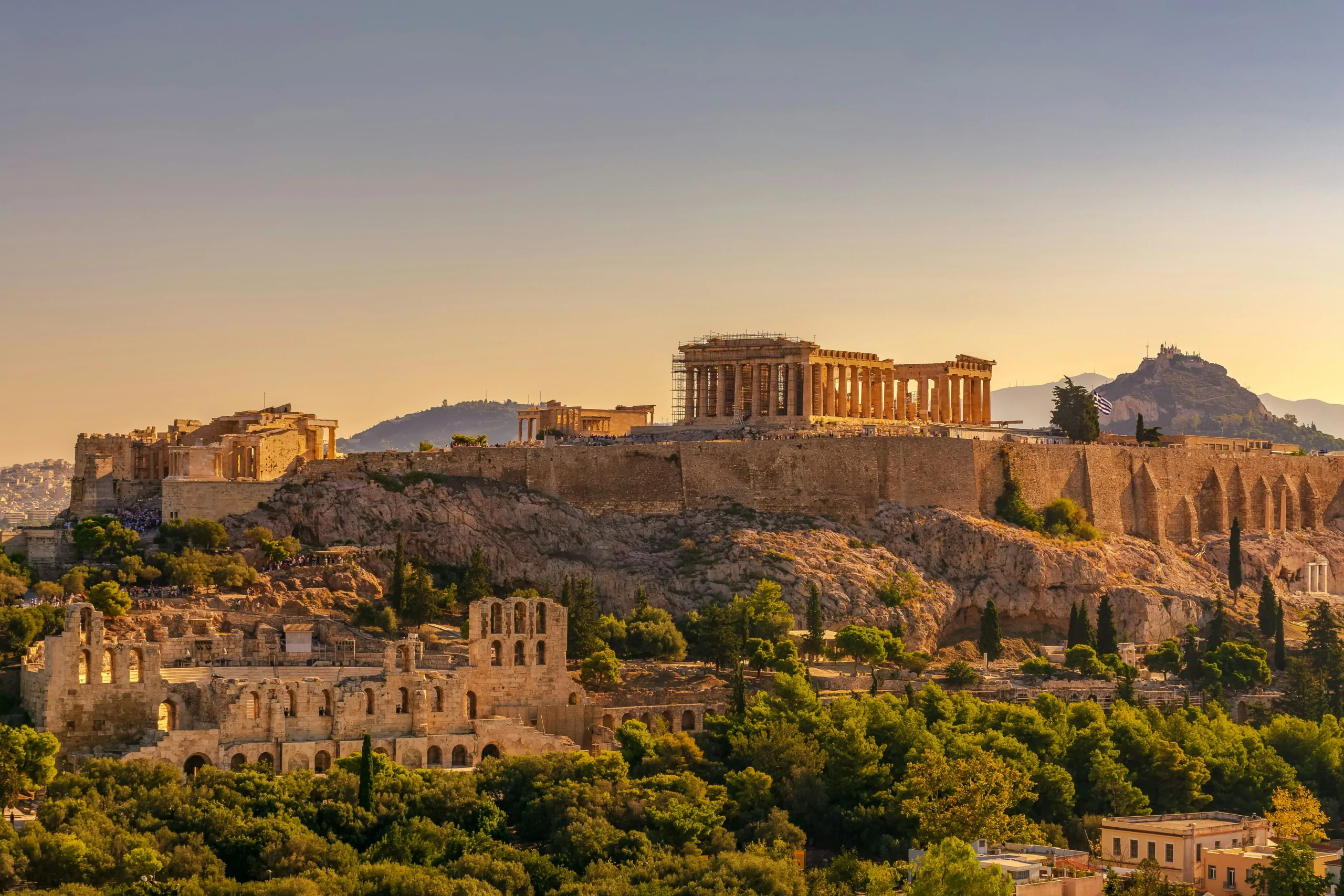
The Acropolis of Athens is a breathtaking monumental masterpiece, symbolizing ancient Greek civilization and renowned for its architectural, artistic, and timeless influence. Built during Athens’ Golden Age from 461 to 429 BC, it consists of buildings that celebrate the Goddess Athena.
Situated on a flat rock 490 feet above sea level, it overlooks modern Athens and continues to inspire architects and designers today. A symbol of cultural and political power, it houses several historically important structures, including the Parthenon, the Temple of Athena Nike, and the Erechtheion.
2. Parthenon (Acropolis of Athens)
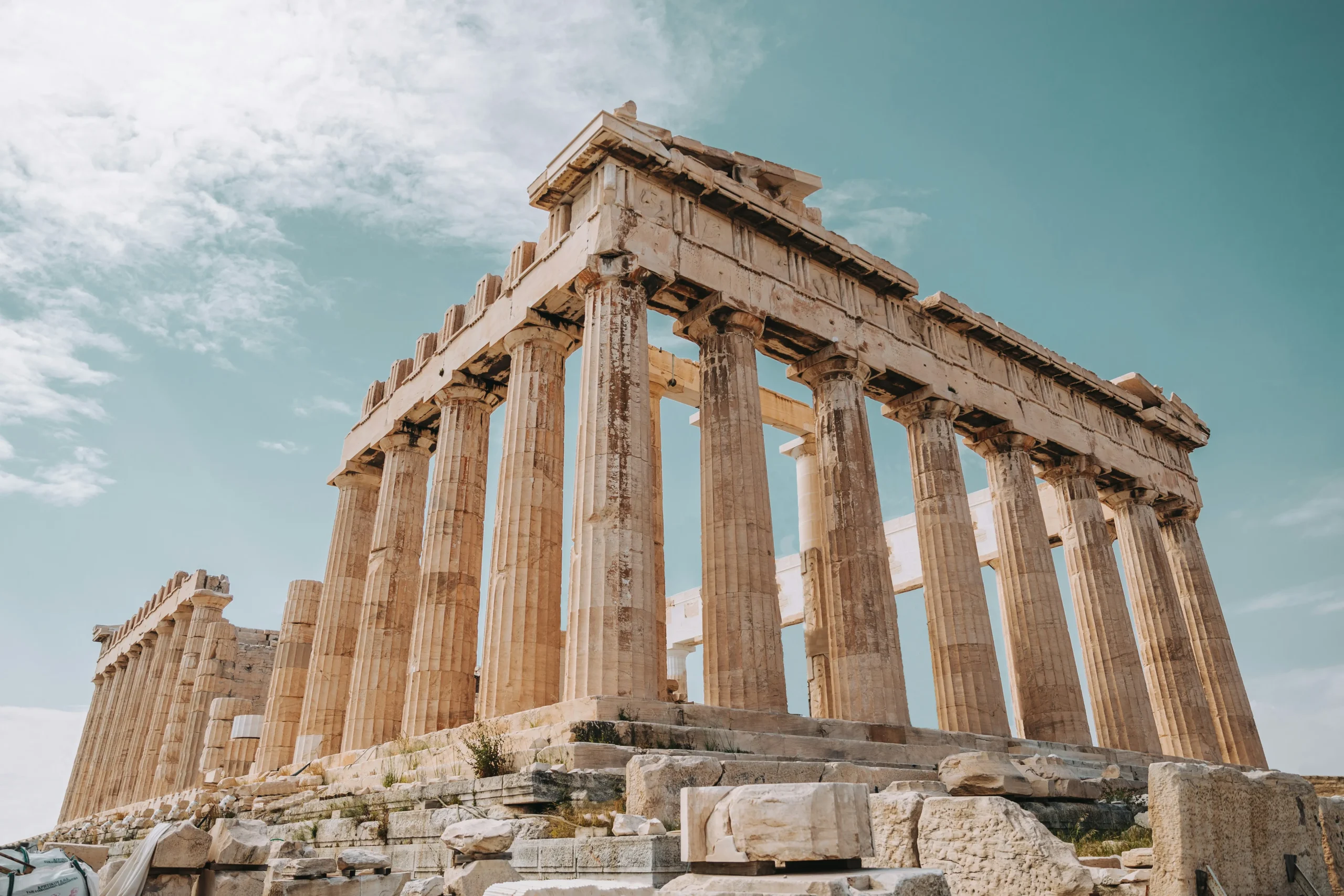
The Parthenon, embodying an extraordinary number of architectural elements, is the masterpiece of Ancient Greek Architecture. The architectural masterpiece is a testament to the heights of classical design and reflects the cultural impact of Athens in Greece during that time frame. The construction of the architectural masterpiece began in the year 447 BCE and was completed in 438 BCE.
Designed by architects Ictinus and Callicrates, along with the supervision of the sculptor Phidias. Dedicated to the Goddess Athena Parthenos (Athena the Virgin), and it stood as a symbol of Athenian democracy and their celebration of victory over the Persians in the Greek-Persian Wars. The masterpiece has suffered damage over several decades, with the basic structure being intact, and is in the process of restoration.
3. Erechtheion
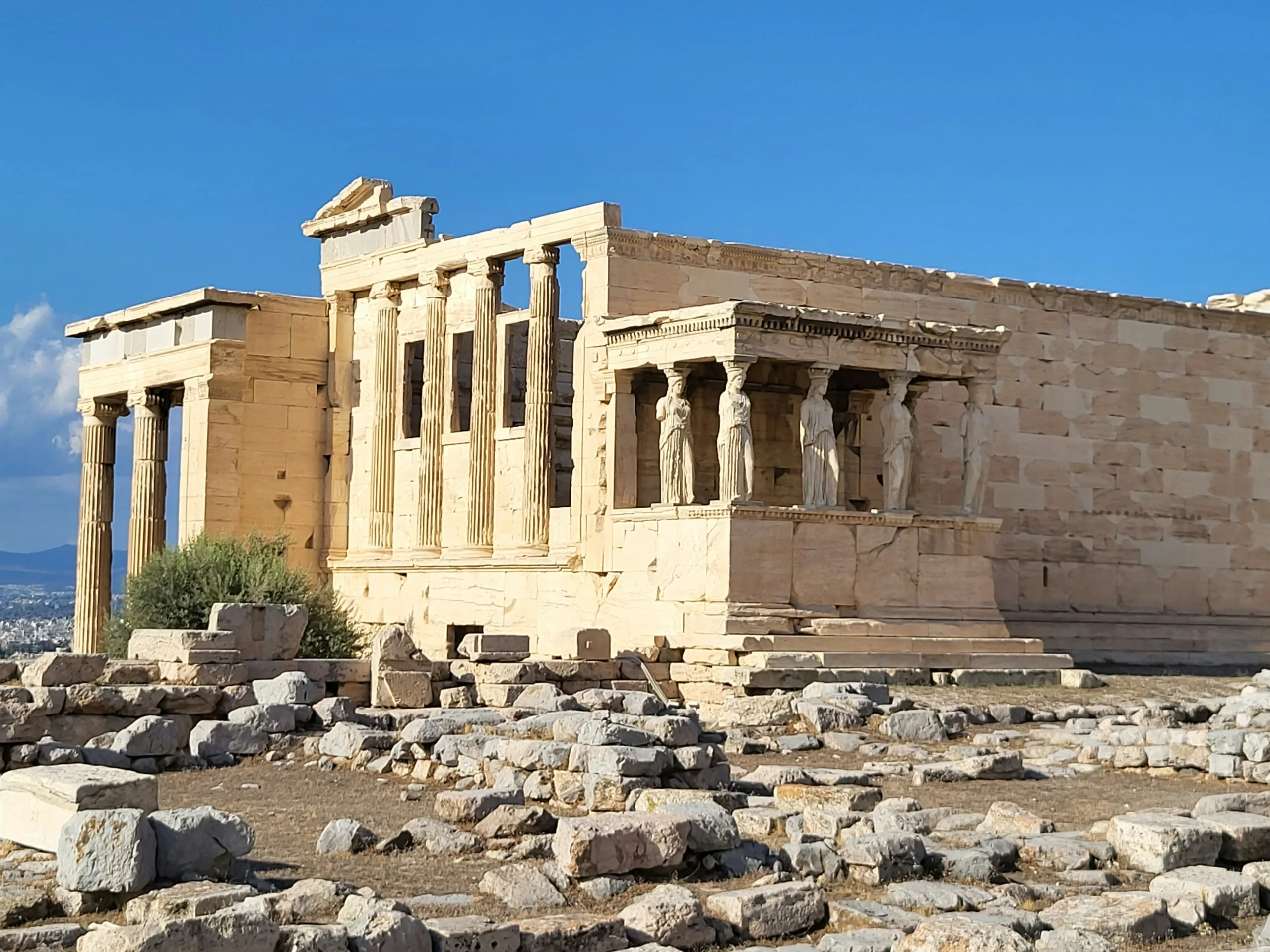
The Erechtheion (Erechtheum) is an ancient Greek Temple built within the Acropolis of Athens to accommodate the religious rituals that housed the old temple. The name of the temple owes to the Demi-God Erechtheus, the mythical Athenian King. The construction of the temple was done between 421 and 406 BCE, built to house the ancient wooden cult statue of the Goddess Athena, meant to glorify the great city’s power and influence.
The most distinctive feature of the entire intricately designed temple complex is the Porch with Six Caryatids. The temple design is elegant and delicate in contrast to the majestic presence of the Parthenon and other complexes in the Acropolis. The asymmetric floor plan of this temple is made up of Pentelic marble with oxidised iron traces creating a soft honey tone.
4. Odeon of Herodes Atticus
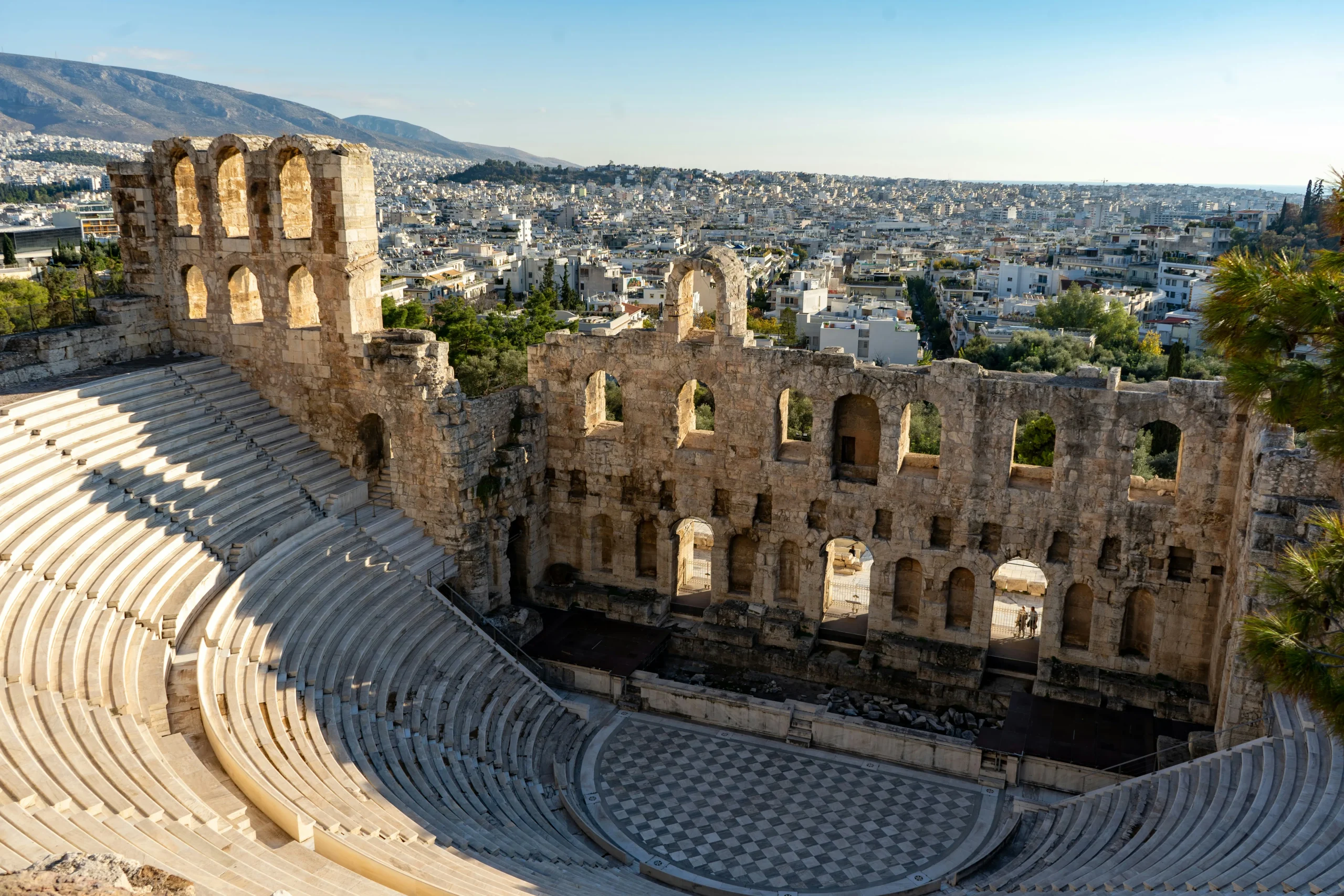
The Odeon of Herodes Atticus, also known as the Herodeion, was built in 161 CE by Herodes Atticus in memory of his wife. Located on the southwest slope of the Acropolis of Athens, this stone Roman theatre blends Roman and Greek architectural styles.
Originally featuring a three-story stage front and a cedar wood roof, it could seat up to 5,000 people for musical performances. Although the theatre was destroyed in 267 CE and damaged over time, it underwent restoration in the 1950s, using Pentelic marble for the seating and orchestra. The theatre remains notable for its semi-circular amphitheatre design, excellent acoustics, and use of architectural materials.
5. Theseum
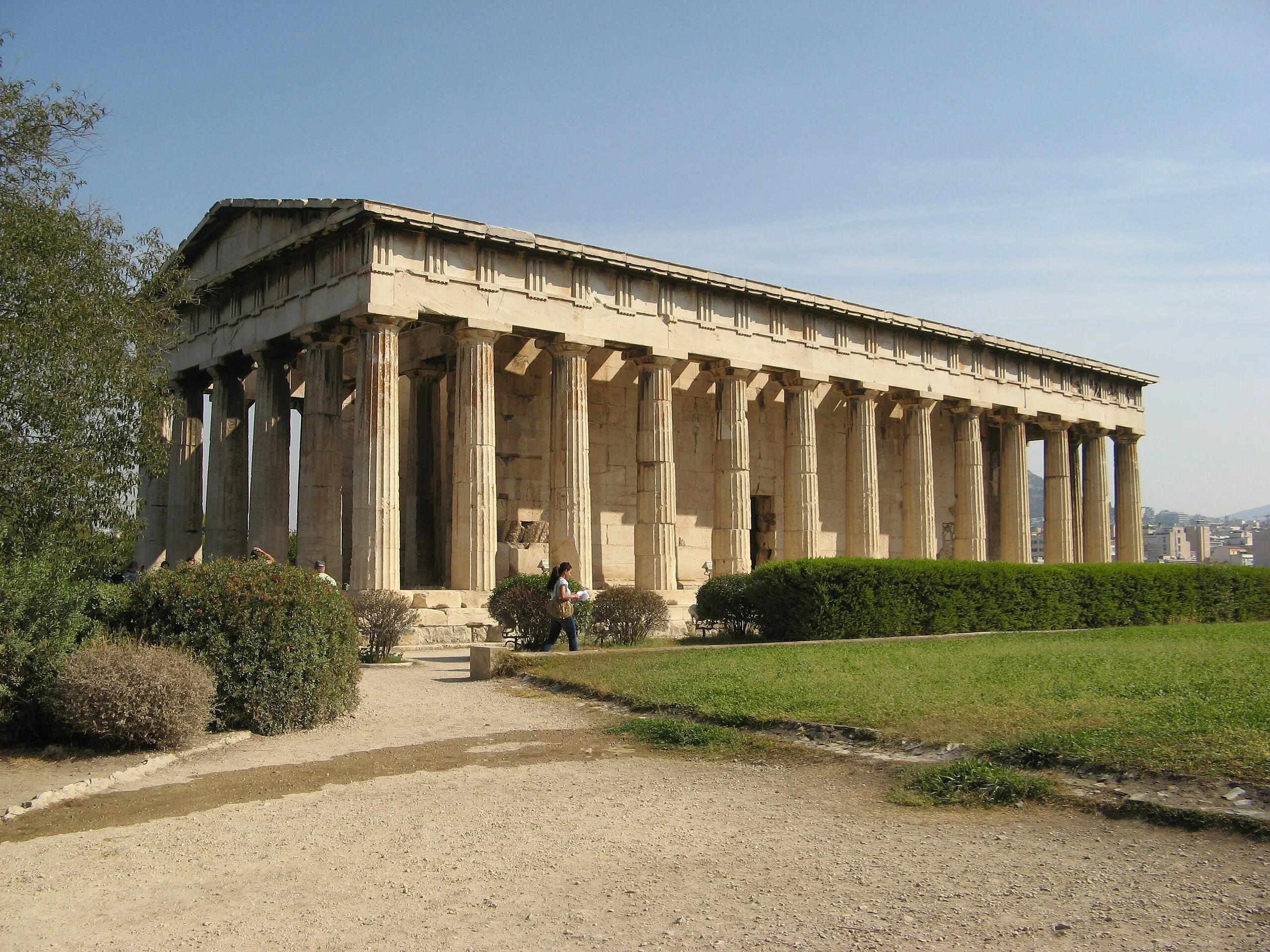
The Theseum (Or the Temple of Hephaestus) is an ancient Greek temple situated in the northwest of the Agora of Athens, completed in 415 BCE. The temple dedicated to Hephaestus, the “God of Fire,” is one of the well-preserved temples on top of the Agoraios Kolonos.
The temple was well preserved because of the building being converted into a Church by the Byzantines centuries later. The temple is a perfect example of a Doric peripteral (Surrounded by a single row of columns) with a total of 6 columns at the ends and 13 at the sides. Built mostly from Pentelic marble, its structure features sculptural decorations depicting the labours of Heracles and the exploits of Theseus.
6. Stoa of Attalos, Agora
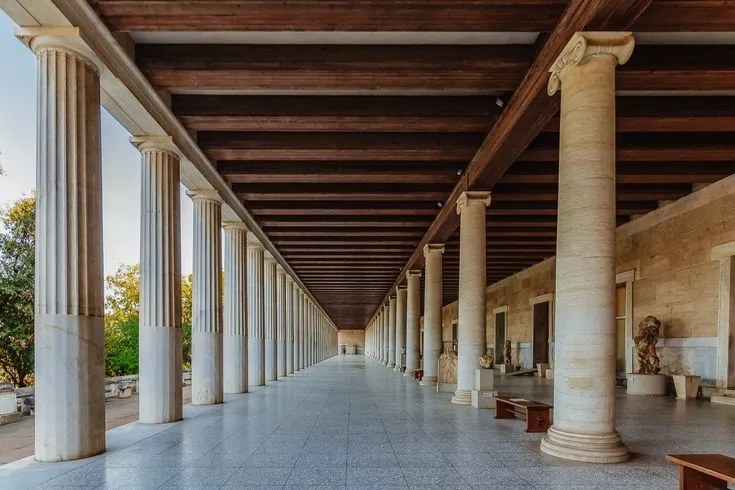
The Stoa of Attalos, located in the Agora of Athens, was originally built by King Attalos II of Pergamon (Ruled between 159 and 138 BC). A prime example of Hellenistic architecture, it served as a bustling commercial and social centre in ancient Athens.
The structure is notable for its elegant use of local marble and limestone, and its combination of Doric columns on the ground floor with Ionic columns above, reflecting the architectural sophistication of the period. In 1956, the stoa was fully reconstructed by the American School of Classical Studies, and it now houses the Museum of the Ancient Agora, preserving and showcasing artifacts from the site’s rich history.
7. The Palace of Knossos

The Palace of Knossos in Crete, is the second most visited architectural site and landmark, right after the Acropolis of Athens. The Palace is often seen as a blueprint or a physical example of how ancient Greek civilization created architecture that blended culture, civilization, function, and innovation. According to historians, the palace is one of the earliest examples of complex and thoughtful architectural planning. The palace consists of three phases;
1. Proto palatial (Old Palace Knossos) – Emerged around 1950-1800 BCE
2. Neo palatial (New Palace Knossos) – Due to destruction from an earthquake, the palace was renovated around 1700 BCE
3. Post palatial (Final Palatial Knossos) – Another reconstruction occurred in 1450 BCE (Lasted 150 years); the palace of the interiors was repainted during this period.
8. Temple of Olympian Zeus, Athens
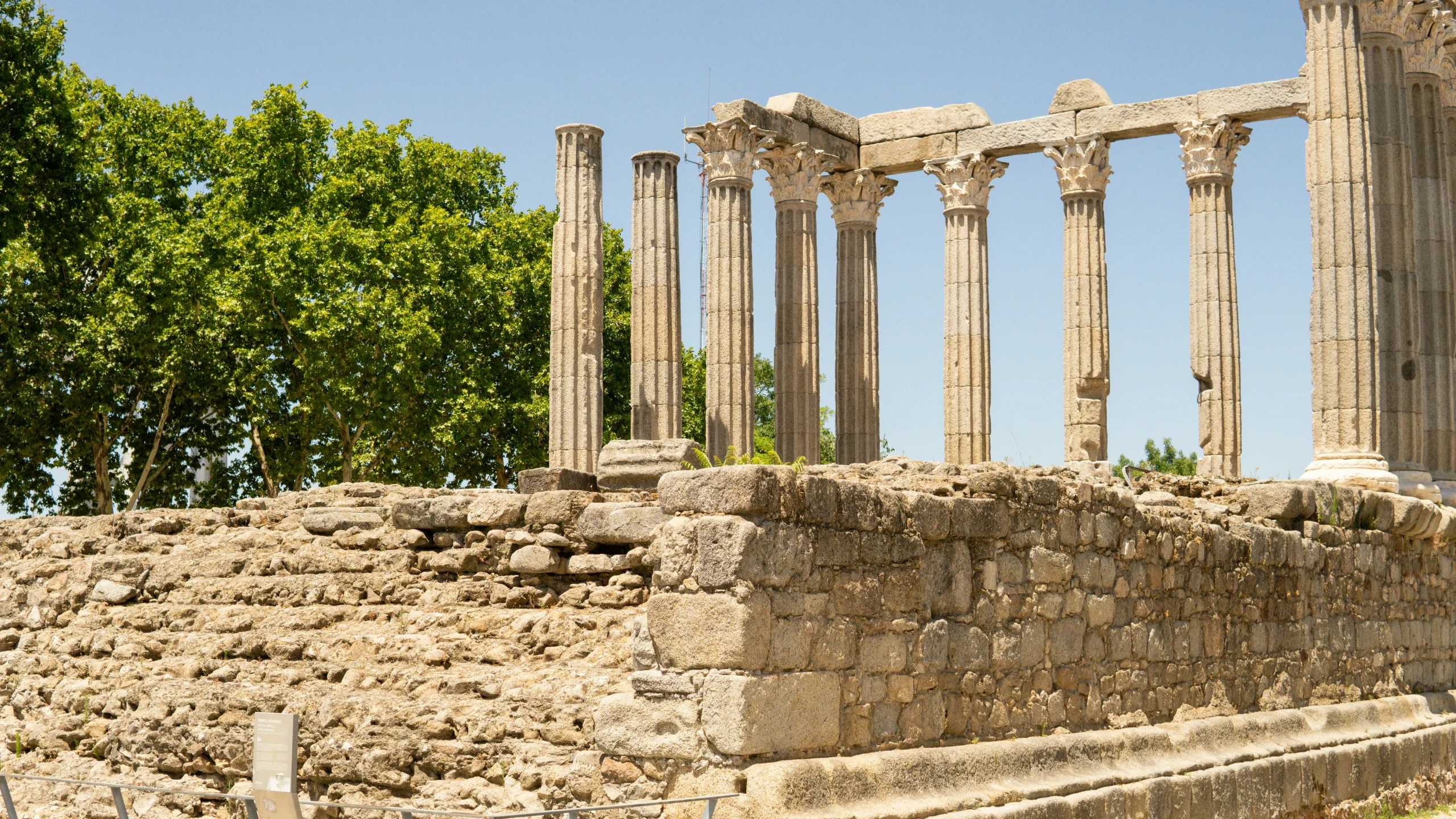
The Temple of Olympian Zeus, also known as the Olympieion, was completed between 124 and 132 CE. The monumental ancient temple situated in Athens is dedicated to the Olympian god Zeus. The temple is considered one of the largest temples ever built in the ancient world and is a monumental testament to Greek Architecture.
The temple showcases the remarkable architectural innovations of that time, leaving an amazing historical landmark in Athens. The temple was built over several centuries, designed as a rectangular structure of approximately 100 by 50 metres, making it one of the largest temples in Greece. Originally featuring a total of 104 colossal Corinthian columns, with each one 17 meters high, as of today, 15 of them are left standing.
9. Temple of Poseidon
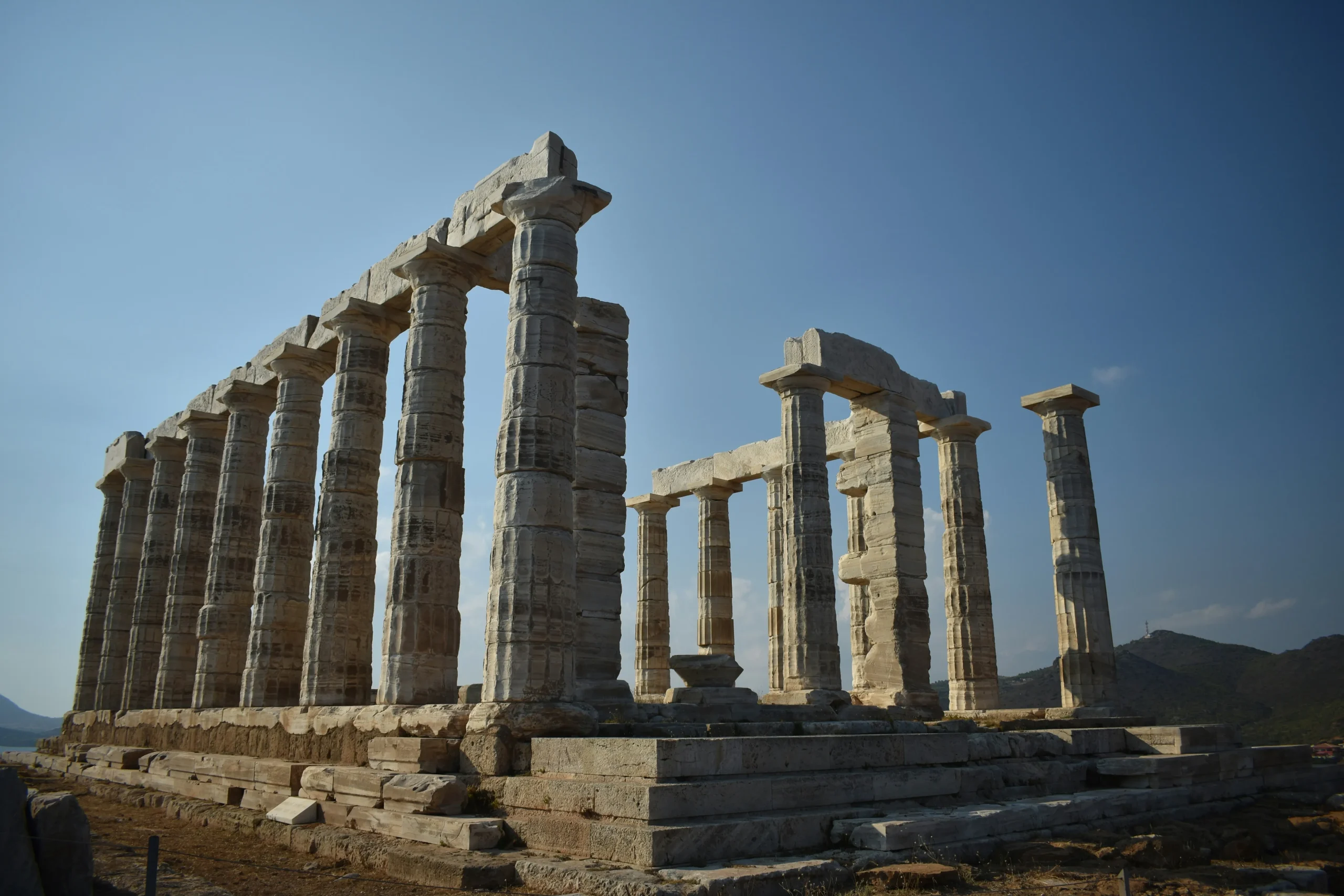
The Temple of Poseidon is an iconic Doric temple built during the Golden Age of Pericles, dedicated to Poseidon (The Olympian God of the Sea). It sits on the edge of Cape Sounion on the southern coast of Attica, overlooking the Aegean Sea. The monument completes the Sacred Triangle of antiquity, along with the Parthenon and the Temple of Aphaia.
This remarkable example of ancient Greek architecture features a distinctive hexastyle layout with six Doric columns in the front portico. The white marble columns give the temple an imposing appearance, while its frieze, depicting the Battle of Centaurs and Theseus, stands as a masterpiece of ancient Greek art.
10. Theatre of Epidaurus

The Theatre of Epidaurus is one of the most admired ancient theatres of Greece, renowned for its exceptional architectural significance and remarkable acoustics. Situated in the city of Epidaurus in the northeastern Peloponnese, was designed for dramatic religious performances honouring Asclepius, the God of medicine.
Built by Polykleitos the Younger in the 4th century BC, it showcases the brilliance of ancient Greek architecture with its semi-circular orchestra and tiered seating built into the hillside, accommodating around 12,000–14,000 spectators. Still in use today for performances, Greek dramas, and the Annual Epidaurus Festival, the theatre’s ongoing function highlights the enduring appeal of ancient Greek design.






